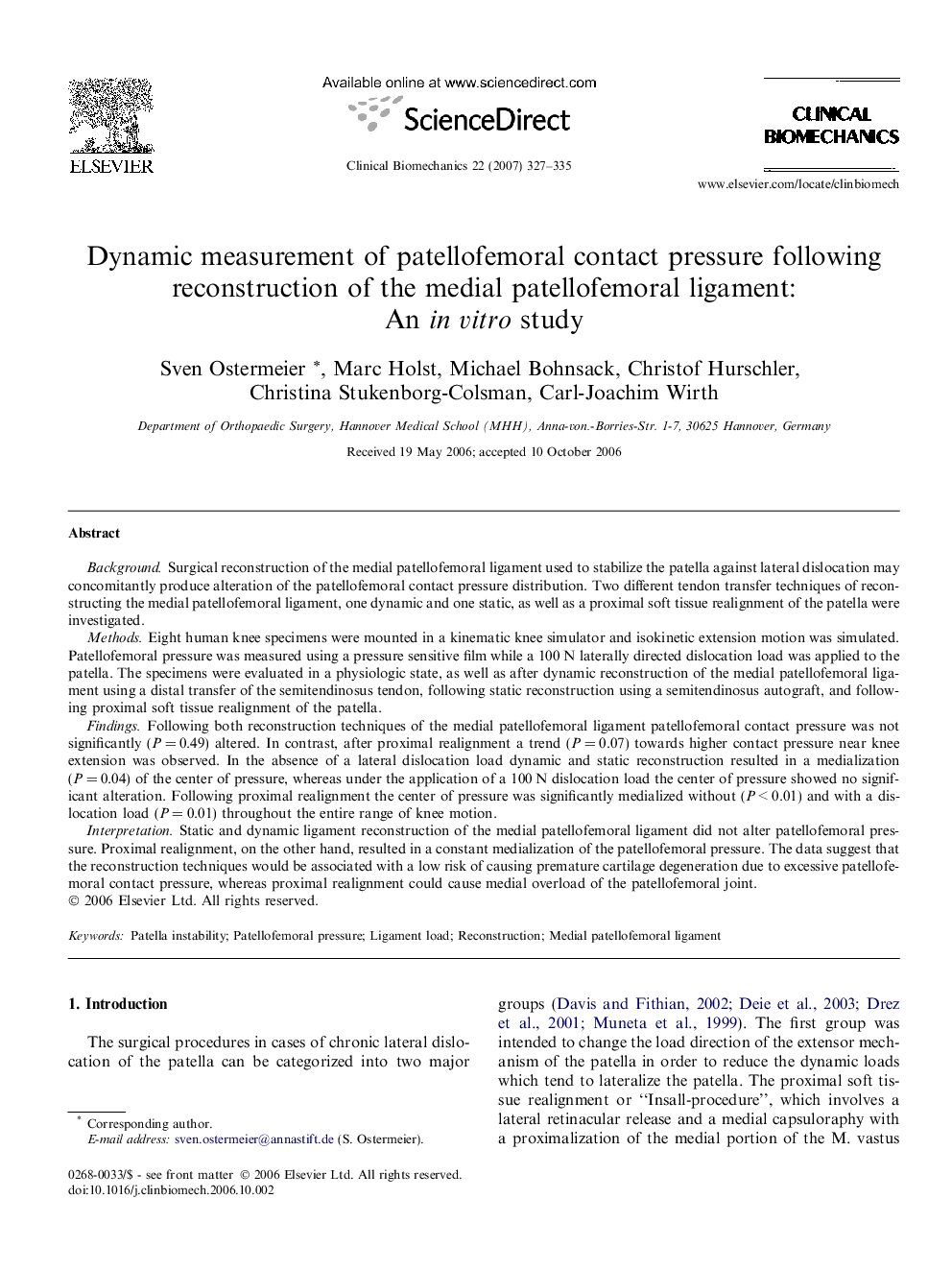| Article ID | Journal | Published Year | Pages | File Type |
|---|---|---|---|---|
| 4051707 | Clinical Biomechanics | 2007 | 9 Pages |
BackgroundSurgical reconstruction of the medial patellofemoral ligament used to stabilize the patella against lateral dislocation may concomitantly produce alteration of the patellofemoral contact pressure distribution. Two different tendon transfer techniques of reconstructing the medial patellofemoral ligament, one dynamic and one static, as well as a proximal soft tissue realignment of the patella were investigated.MethodsEight human knee specimens were mounted in a kinematic knee simulator and isokinetic extension motion was simulated. Patellofemoral pressure was measured using a pressure sensitive film while a 100 N laterally directed dislocation load was applied to the patella. The specimens were evaluated in a physiologic state, as well as after dynamic reconstruction of the medial patellofemoral ligament using a distal transfer of the semitendinosus tendon, following static reconstruction using a semitendinosus autograft, and following proximal soft tissue realignment of the patella.FindingsFollowing both reconstruction techniques of the medial patellofemoral ligament patellofemoral contact pressure was not significantly (P = 0.49) altered. In contrast, after proximal realignment a trend (P = 0.07) towards higher contact pressure near knee extension was observed. In the absence of a lateral dislocation load dynamic and static reconstruction resulted in a medialization (P = 0.04) of the center of pressure, whereas under the application of a 100 N dislocation load the center of pressure showed no significant alteration. Following proximal realignment the center of pressure was significantly medialized without (P < 0.01) and with a dislocation load (P = 0.01) throughout the entire range of knee motion.InterpretationStatic and dynamic ligament reconstruction of the medial patellofemoral ligament did not alter patellofemoral pressure. Proximal realignment, on the other hand, resulted in a constant medialization of the patellofemoral pressure. The data suggest that the reconstruction techniques would be associated with a low risk of causing premature cartilage degeneration due to excessive patellofemoral contact pressure, whereas proximal realignment could cause medial overload of the patellofemoral joint.
